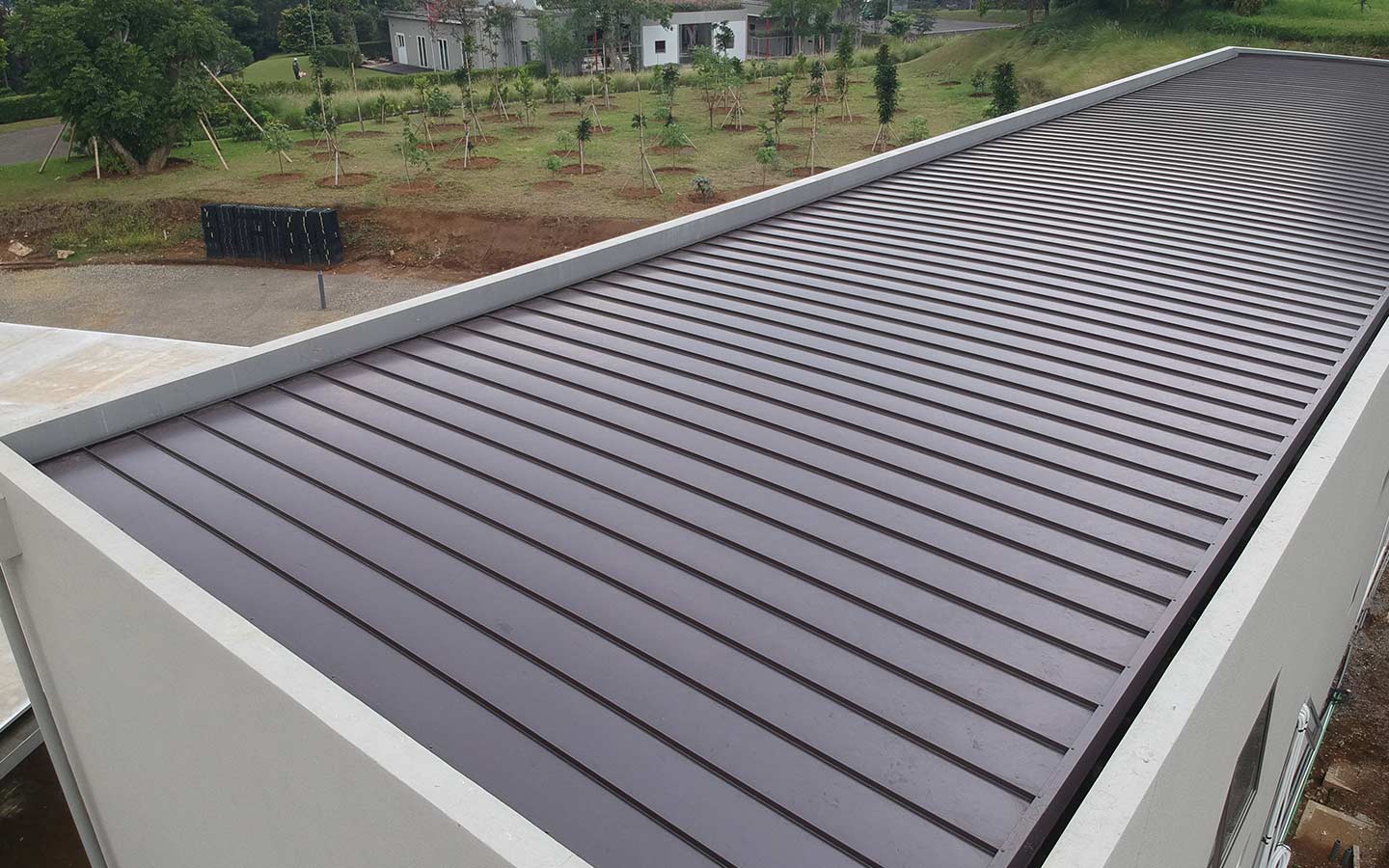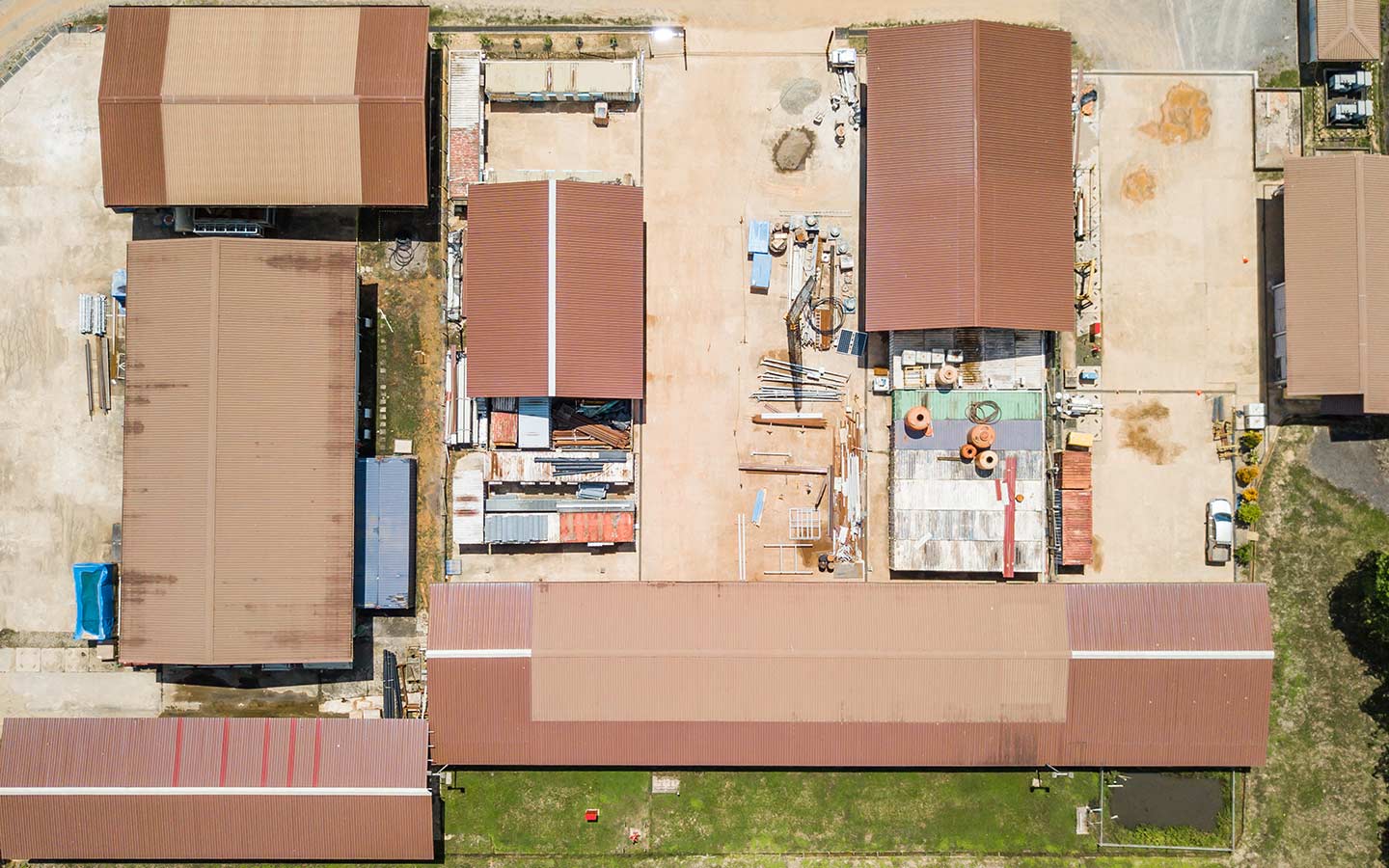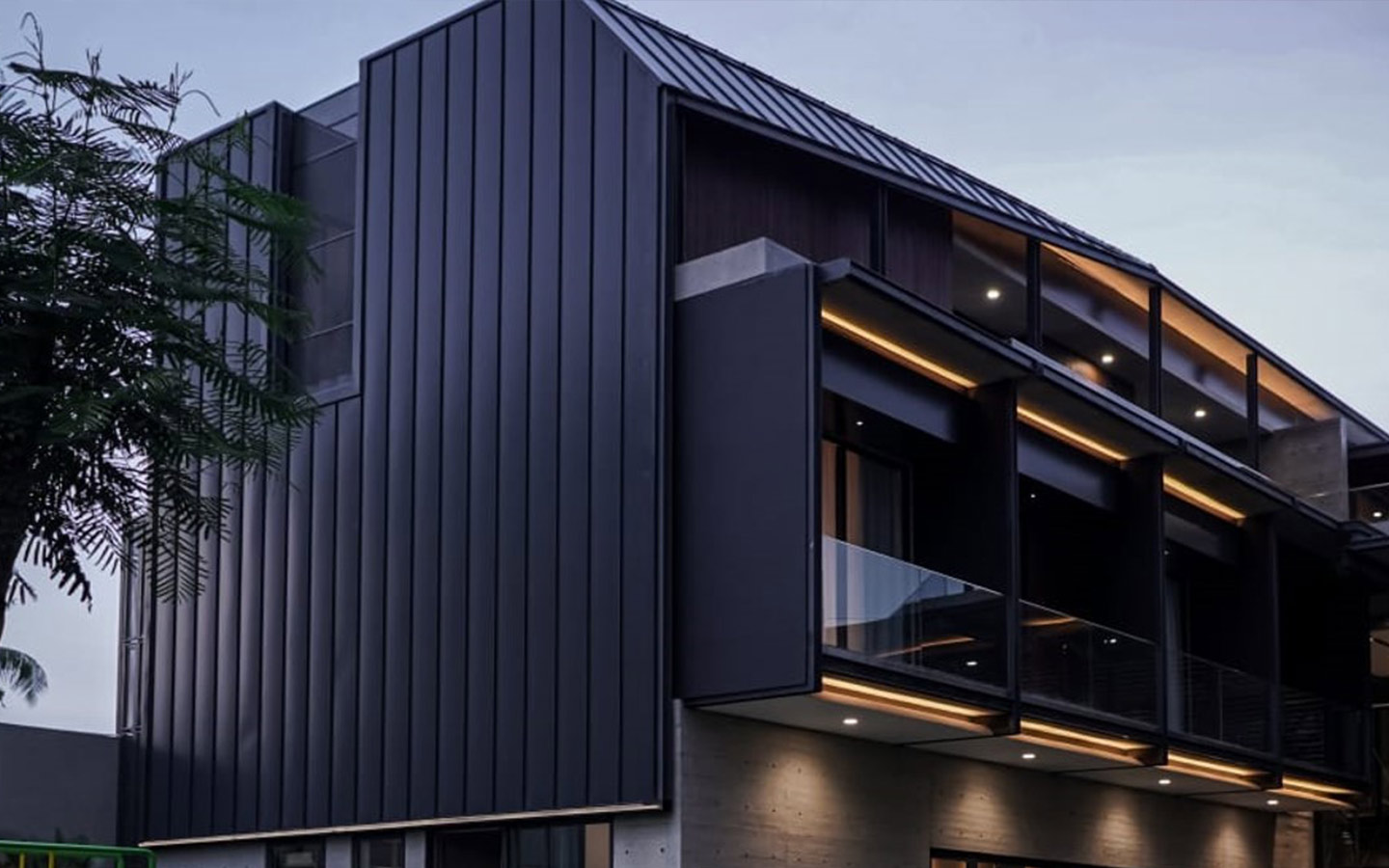04 Nov 2024
10 Types of Roofs Based on Their Materials
10 Types of Roofs Based on Their Materials
Share:
When choosing the type of roof for a house, one important factor to consider is the material used. If you are looking for a material that is not only strong but also aesthetically pleasing, COLORBOND® pre-painted steel could be the best choice. With over 50 years of proven technology, COLORBOND® can reinforce the roof structure while providing durable protection against extreme weather. Additionally, this material offers a modern and elegant architectural appearance, making your home both beautiful and resilient.
Each type of roof has its own advantages and disadvantages. From gable roofs to hipped roofs to flat roofs, each design provides different functions and aesthetic values. Therefore, selecting the right roof type for your home is an important decision that should be tailored to your needs, both in terms of architectural style and resilience to environmental conditions.
Main Functions of a Roof
The roof of a house plays a crucial role in ensuring the comfort and safety of its occupants. This is due to the primary function of the roof, which is to protect the house from various weather conditions, such as heat and rain.
 Sayana Cabin House using COLORBOND®.
Sayana Cabin House using COLORBOND®.
The roof also serves as a shield that protects the building's structure from damage caused by external environmental factors, such as humidity and temperature changes. When designed attractively, a roof can even add aesthetic value to the home.
10 Types of Roofs Based on the Materials Used
There is a wide variety of roof types. Depending on the material you choose, each will significantly affect comfort, aesthetics, and the budget you need to prepare. To help you better understand the available options, here are the types of roofs you should know:
1. Clay Roof Tiles
The ability of clay tiles to insulate against heat and sound from the outside, especially during rain, is one reason why they are so popular. Additionally, clay tiles are considered an environmentally friendly material.
However, clay tiles can be relatively easy to crack. Moss is also a common issue that can be troublesome. Because they are installed one by one, the installation process for clay tiles is also longer.

MG Private House Jakarta uses COLORBOND® for its gable roof.
2. Concrete Roof Tiles
This material is often used for homes with a minimalist concept due to its clean and versatile appearance. Concrete tiles are resistant to decay, fire, and insects, and they have a longer lifespan.
Unfortunately, concrete tiles tend to be heavier, especially compared to clay tiles. The cost and installation time are also relatively longer than other types of tiles.
3. Asbestos Roof
Asbestos roofs are known for their lightweight properties. They are also easy to install. One thing to note is that asbestos has an unappealing appearance and can be quite brittle. Additionally, the long-term use of asbestos can impact health, as inhaling asbestos dust can be hazardous.
4. Metal Roof
Metal roofs are known for their low cost and lightweight. They do not require a complex roof structure for installation. However, metal roofs do not provide good insulation, making the space underneath feel hot. During heavy rain, the noise can also be very disturbing, and they can easily be lifted by the wind if not installed securely. This type of roof is not suitable for tropical climates.

M House On Sersan Bajuri Street, West Bandung Regency, using COLORBOND®.
5. Glass Roof Tiles
If you want to add natural lighting to your home, consider glass tiles. Aesthetically, these tiles also look attractive. However, it’s important to note that glass tiles need to be installed carefully as they are vulnerable to excessive heat. Additionally, their use is often limited to certain areas, such as skylights.
6. Galvalume Roof
Made from a mixture of zinc, aluminum, and silicon, galvalume roofs are known for their resistance to rust. They also have high durability against various weather conditions. However, despite being strong, galvalume tends to absorb heat and can create loud noise during rain. Unsurprisingly, galvalume is more often used for outdoor areas such as garages or carports.
7. Polycarbonate Roof
This roof is known for its ability to block UV rays. For this reason, polycarbonate roofs are often used for terraces. However, to prevent quick deterioration or fading, polycarbonate roofs require special maintenance.

The Conoco Philips factory in Lubuk Bintialo uses COLORBOND®.
8. Shingle Roof
Made from ironwood, shingle roofs can be a perfect choice for creating a cool ambiance inside the house. Their ability to absorb heat is also well-known. However, shingle roofs can be quite difficult to find, and they tend to be relatively expensive.
9. Ceramic Roof
Ceramic tiles excel in both aesthetics and strength, and this reputation is strongly associated with them. Made from clay processed with an additional glaze layer, these tiles are known for being fire-resistant and not easily affected by moss. Additionally, their colors are long-lasting.
One thing to keep in mind is that ceramic tiles are relatively expensive, and their installation can be quite complicated and costly.
10. Metal Roof
Metal roofs are commonly used not only in commercial buildings but also in modern residences. Made from materials like lightweight steel, metal roofs are known for being lightweight, durable, and capable of keeping homes cool due to their heat-reflective properties.
 Private House Palembang using COLORBOND®.
Private House Palembang using COLORBOND®.
One example is COLORBOND® pre-painted steel, which offers maximum protection from extreme weather while providing an aesthetically pleasing appearance. This roof combines material strength with beauty, making it an ideal choice for homes that prioritize style and durability.

